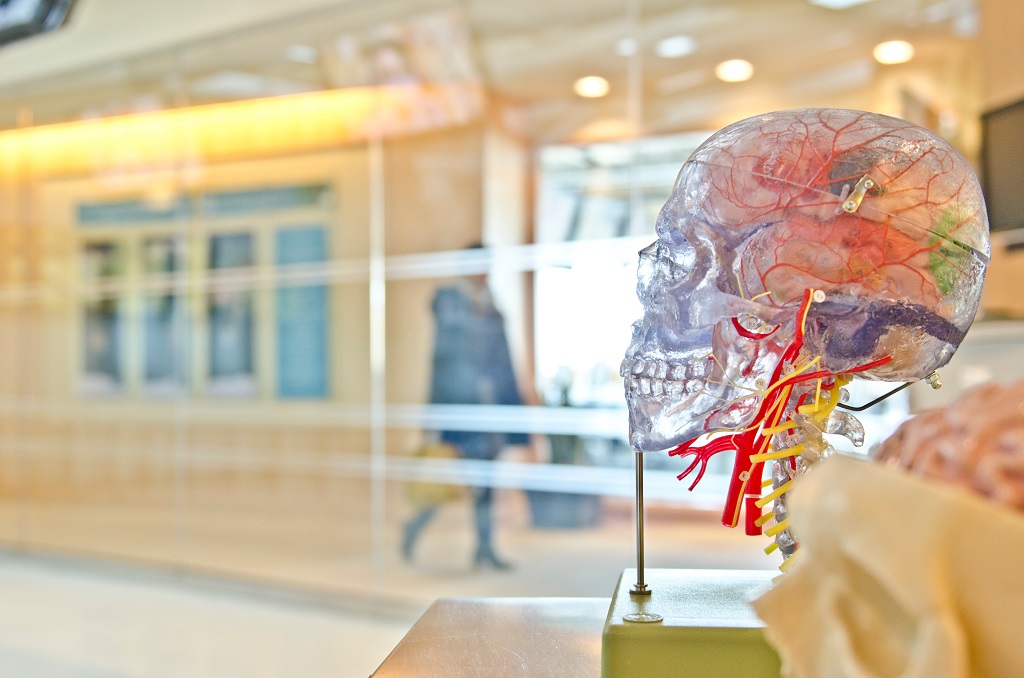Neuromorphic systems: computers inspired by the human brain
We tell who and why they are engaged.

/ photo Paweł Czerwiński Unsplash
What is a neuromorphic chip
This is a processor whose work is based on the principles of the human brain. Such devices simulate the work of neurons and their processes - axons and dendrites - responsible for the transmission and perception of data. Connections between neurons are formed by synapses - special contacts through which electrical signals are transmitted.
One of the tasks of neuromorphic devices is to accelerate the learning of convolutional neural networks for image recognition. Artificial intelligence systems based on this technology do not need to access a massive repository with training data over the network - all information is constantly contained in artificial neurons. This approach makes it possible to implement machine learning algorithms locally. Therefore, it is expected that neuromorphic chips will find application in mobile devices, IoT gadgets, and data centers.
')
Why engineers are inspired by the human brain
Engineers involved in the development of neuromorphic chips (we will talk more about them later), first of all, note the high computational capabilities of the human brain.
According to a number of studies, our brain has a potential performance of one exaflops. Traditional supercomputers of such computing power are only being developed so far - the first cars are not expected until 2021 .
At the same time, the brain has extremely high energy efficiency, which is the second important factor for those who develop neuromorphic systems.

/ photo jesse orrico Unsplash
Of course, artificial systems have significant limitations. Neural networks differ from biological analogues in the inability to "remember" past skills when learning a new task. An algorithm trained to recognize dogs cannot distinguish between people. But experts from this field are hoping that neuromorphic chips will open up new opportunities for learning "multi-tasking" neural networks and solve similar problems.
The first neuromorphic chips
The first attempts to create artificial neurons were made in the 60s of the last century. Then one of the future inventors of the microprocessor Ted Hoff (Ted Hoff) together with Stanford professor Bernard Widrow created a single-level neural network based on memistors - electrochemical resistors with a memory function. It is believed that this development marked the beginning of neuromorphic engineering.
In the 1980s, engineer Carver Mead suggested using transistors as analog components, not digital switches. In the 90s, the team led by Mead introduced an artificial synapse capable of storing information for a long time, and a neuromorphic processor based on floating gate transistors .
At the same time, US President George W. Bush announced the beginning of the “ Decade of the Brain ” and called for sponsoring programs to study this body. All this gave impetus to the development of neuroinformatics and computational neuroscience and led to the creation of an infrastructure for further study of the topic.
Over the past ten years, human knowledge of the work of the brain has reached new heights. Since 2013, Switzerland has been developing the Human Brain Project (HBP). That same year, America launched the BRAIN Initiative . These initiatives had a serious impact on the field of artificial intelligence systems and led to the emergence of new neuromorphic technologies.
What is developed today
Today on the creation of neurochips are working in IBM. Back in 2008, the company's engineers, with the support of DARPA, took part in the SyNAPSE program, in the framework of which computer architectures other than von Neumann's were developed. For three years, IBM managed to develop a nucleus with 256 artificial neurons (each of them had 256 synapses). Three years later, the company introduced the TrueNorth processor, consisting of 4096 such cores - more than a million neurons. And it is already used in the tasks of recognition of gestures and speech . The company's developers claim that TrueNorth based computing systems will be able to successfully simulate the brain of a cat. However, a number of experts consider such statements to be an obvious exaggeration.
Another major IT company that develops neuromorphic computing systems is Intel. Last year, they introduced the Loihi chip. It has 128 neuromorphic nuclei, each of which simulates 1024 neurons. You can program the processor using an API written in Python. The first copies of these devices have already been sent to the data centers of several leading universities to conduct tests on real problems.
Speaking of universities, engineers from Manchester University are working on neuromorphic chips. Last year, they introduced the SpiNNaker architecture, consisting of a million cores that can emulate the work of one hundred million neurons . This installation consumes 100 kW. You can program your computer using the PyNN language . Today the machine is used to simulate the processes occurring in the mouse brain.
Despite the progress of recent years, it can be said that neuromorphic iron is in the early stages of its development. The tasks that are set for AI systems based on it are mainly limited to the recognition of objects. Nevertheless, representatives of the IT industry are convinced that in the future neuromorphic hardware will allow for full-fledged simulations and will open up completely new computing capabilities.
What we write about in our blog:
- Why vGPU are not inferior in performance to "iron" solutions
- VMware EMPOWER 2019: sharing impressions and telling about the most interesting
- Prospects for data centers: technologies that will increase server performance
- Processors for servers: discuss innovations
- The development of data centers: technological trends
- How to improve the energy efficiency of the data center
Source: https://habr.com/ru/post/457578/
All Articles